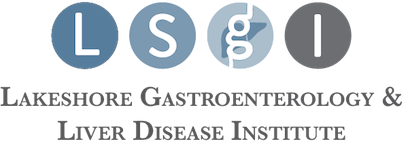Experts in Compassionate Care
Lakeshore Gastroenterology and Liver Disease Institute doctors are the experts in compassionate patient care.
Endoscopy Combined With An Ultrasound Leads To A More Precise Diagnosis
An Endoscopic Ultrasound, or Endoscopic Ultrasonography (EUS), helps Doctors determine the cause, diagnose and treat some symptoms patients have related to abdominal pain or weight loss conditions.
An Endoscopic Ultrasound, provides detailed images Doctors
can use to evaluate, study and treat a variety of conditions.
WHAT IS AN Endoscopic Ultrasonography (EUS)?
An endoscopy procedure can sometimes be combined with an ultrasound to help improve detection of a variety of conditions. The exam provides precise and specialized images to help your Doctor make a diagnosis. An Endoscopic Ultrasonography (EUS) uses the endoscopic flexible tube with an ultrasound probe attached. The ultrasound is available for the Upper and Lower endoscopy procedures and allows Doctors to see the digestive tract.
An ultrasound probe can be attached to the endoscope to create specialized images of the wall of your esophagus or stomach. An endoscopic ultrasound may also help your doctor create images of hard to reach organs, such as your pancreas, gallbladder, liver, ovaries, and uterus. Endoscopes can use high-definition video which provides clearer high-quality images, which are more detailed than a traditional ultrasound.
Many endoscopes allow your doctor to use technology, called narrow band imaging, which uses a special light to help better detect precancerous conditions, such as Barrett's Esophagus.
EUS is very helpful in evaluating diseases of the gallbladder, bile ducts, and pancreas as well as staging in various types of upper and lower gastrointestinal cancers.
UPPER Endoscopic Ultrasonography allows your Doctor to view different parts of the upper GI tract, including the wall of the patient's esophagus and stomach, along with parts at the beginning of the small intestine which can be easily visualized.
LOWER Endoscopic Ultrasonography allows Doctors to view parts of the colon, and rectum.
Similar to a regular endoscopy, while performing the exam our Doctor is able to take an image of the lump or lesions they are treating, and take necessary biopsies (tissue samples) or conduct polypectomy (polyp removal). During the procedure, the Doctor will be able to treat some of the conditions you have.
WHAT HAPPENS AFTER YOUR CONSULTATION?
After your appointment, your Doctor will discuss an individual treatment plan with you and you will receive a visit summary. In addition to the appointment notes, you may receive a medication and a test order summary.
You will be given information about what you need to know to prepare for any tests or procedures. At that time we can give you with a summary about a variety of conditions related to your circumstances.
WILL I HAVE ANESTHESIA DURING MY ENDOSCOPY PROCEDURE?
Patients do receive medication (or a sedative) during the procedure to help them relax. Depending on the type of exam you are having, appropriate anesthesia medication is given for the UPPER or LOWER Endoscopic Gastrointestinal Ultrasonography. While an EUS examination of the lower gastrointestinal tract can often be performed safely and comfortably without medications, your doctor will make recommendations on each patient's specific needs. Please discuss any concerns directly with your Doctor during your appointment.
HOW LONG DOES THE PROCEDURE TAKE?
An EUS procedure time will vary based on individual patient circumstances, and especially in cases of biopsy, or treatment of a cyst. After your procedure your doctor will review the results with you.
COMMON CONDITIONS & PROCEDURES
Barrett's esophagus
Diseases of the pancreas, bile duct, and gallbladder
Digestive cancer
Early cancer detection
Evaluating masses, lumps or cysts
Evaluating lesions or nodules
Fine needle aspiration (for tissue samples)
Fecal incontinence
Chronic pancreatitis
Precancerous conditions
Respiratory cancer
Studying and evaluating lymph glands
Staging of cancers
Stomach pains
Treatment of polyps
ADDITIONAL READING
For those patients who want to know more, we have linked to articles with more information.
AFTER YOUR APPOINTMENT
After your appointment you will receive a visit summary. We include everything you need to know about any tests or procedures your doctor has ordered. In addition to the notes from your visit, we can give you more reading about a variety of conditions related to your circumstances.

